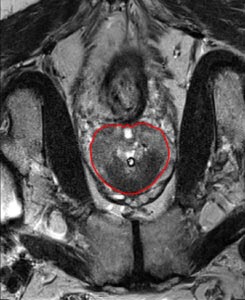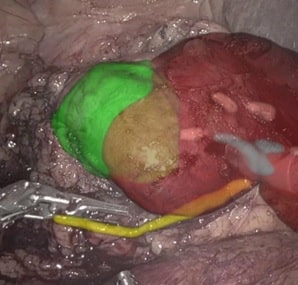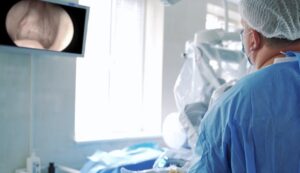The prostate gland is part of the male reproductive system. It is found in front of the rectum and below the bladder, surrounding the first part of the urethra. Ultrasound and MRI are the most commonly used techniques to image the prostate gland. In particular, detailed MR images allow to evaluate the prostate and determine the presence of diseases.
The primary indication for MRI of the prostate is the evaluation of prostate cancer. The test is commonly used to evaluate the extent of prostate cancer in order to determine if it is confined to the prostate gland, or if it has spread outside. The images can then be examined by an expert physician to evaluate and decide the most appropriate treatment response.
Volume is a key indicator of the health of the prostate: it reveals key information about the stage of the cancer, hints at the probable prognosis and suggests possible treatments. Besides the dangers of underestimated or late detection of an aggressive fast-growing tumor, it is crucial to avoid also overdiagnosis and overtreatment of a slow tumor, which is unlikely to threaten a man’s life.
The need for reliable evidence is far from trivial. Prostate cancer is the second most common cancer among American men. More than 200,000 new cases of prostate cancer are diagnosed every year and about 1 man in 7 will be diagnosed with prostate cancer during his lifetime.
Precise estimate of the prostate volume
It is therefore key to get a most precise estimate of the prostate volume. When the determination of this information is inaccurate and/or inconsistent, serious limitations are posed to its usefulness in clinical practice: size, shape, and location of the prostate in relation to adjacent organs is also essential information while planning surgeries (like prostatectomy), radiation therapy, and new minimally invasive therapies, such as cryotherapy and high-intensity focused ultrasound.
MRI-guided prostate volume estimation
The rich experience of RSIP Vision in medical segmentation (read here about kidney segmentation) enables us to recommend an approach based on a semi-automatic prostate segmentation, in which the initial input is manual (coming from the physician). The method follows an optimal path finding technique, a robotic system able to deal with image noise. The optimal path technique starts off from ultrasound imaging, which contains noise-rich data particularly complex to analyze. The technique finds the borders of the prostate, enabling a reliable calculation of the prostate volume, leading to the key information which the health professional is looking for. This approach is giving our client and us very robust, high quality results which are proving extremely helpful in clinical practice for both detection and diagnostic.


 Urology
Urology



